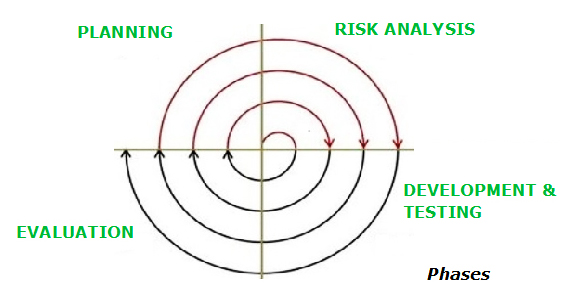

Spiral Model is one of the oldest form of the Software Development Life Cycle Models(SDLC), which was first defined by the Barry Boehm in the year 1986. Basically, this model is an evolutionary type model, which works on the combined approach of the waterfall and iterative model.
This model is driven by the risk analysis and evaluation requirements and keeps on iterating, covering each phase of the model repeatedly, until the final products achieved, fulfils all the requirements that were evolved before and during the development process.
Spiral model, generally involves four phases, which are followed repeatedly, in each round of the model, until no further requirements are needed to be implemented in the software product.

This phase, mainly consists of following activities:
This is the crucial stage and needs to be carried out attentively, in order to identify all the potential risks, associated with the software product, and accordingly, designing and preparing the risk strategy and mitigation plan.
It is an important phase of this model, where all the requirements, strategies and plans are implemented and executed, so as to develop the software product. Further, the software development process is subsequently followed by testing activities, where the developed software product is being evaluated, to assess its accurate working. Accordingly, reports are generated, which includes defects identified along with the possible solution.
This phase involves the software product interaction with the customers, who assess them and accordingly, provide their feedbacks, which helps in determining the requirements or features that needs to be added or removed from the software, in the next iteration, so as to satisfy the customer's need.
Advertisement: